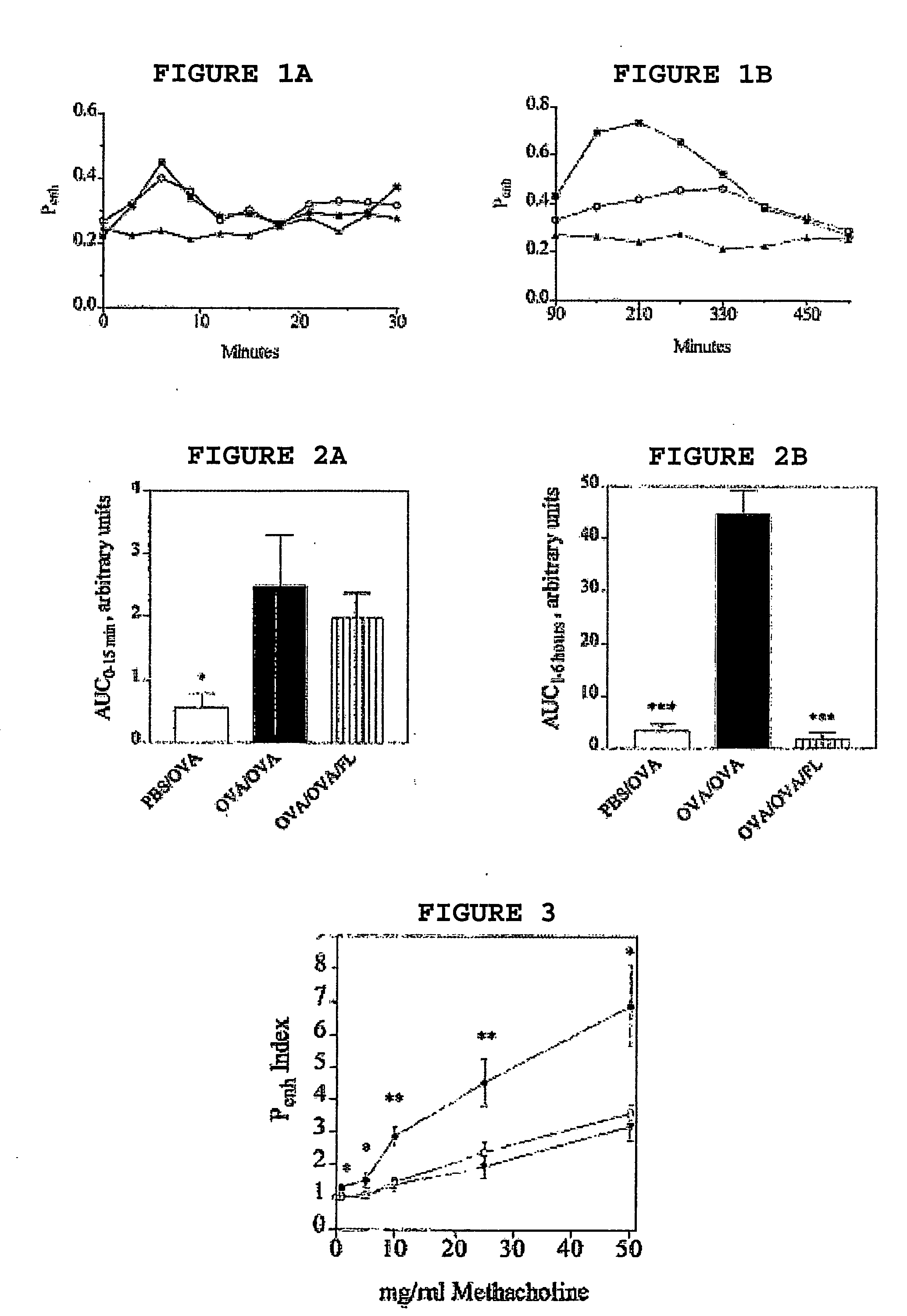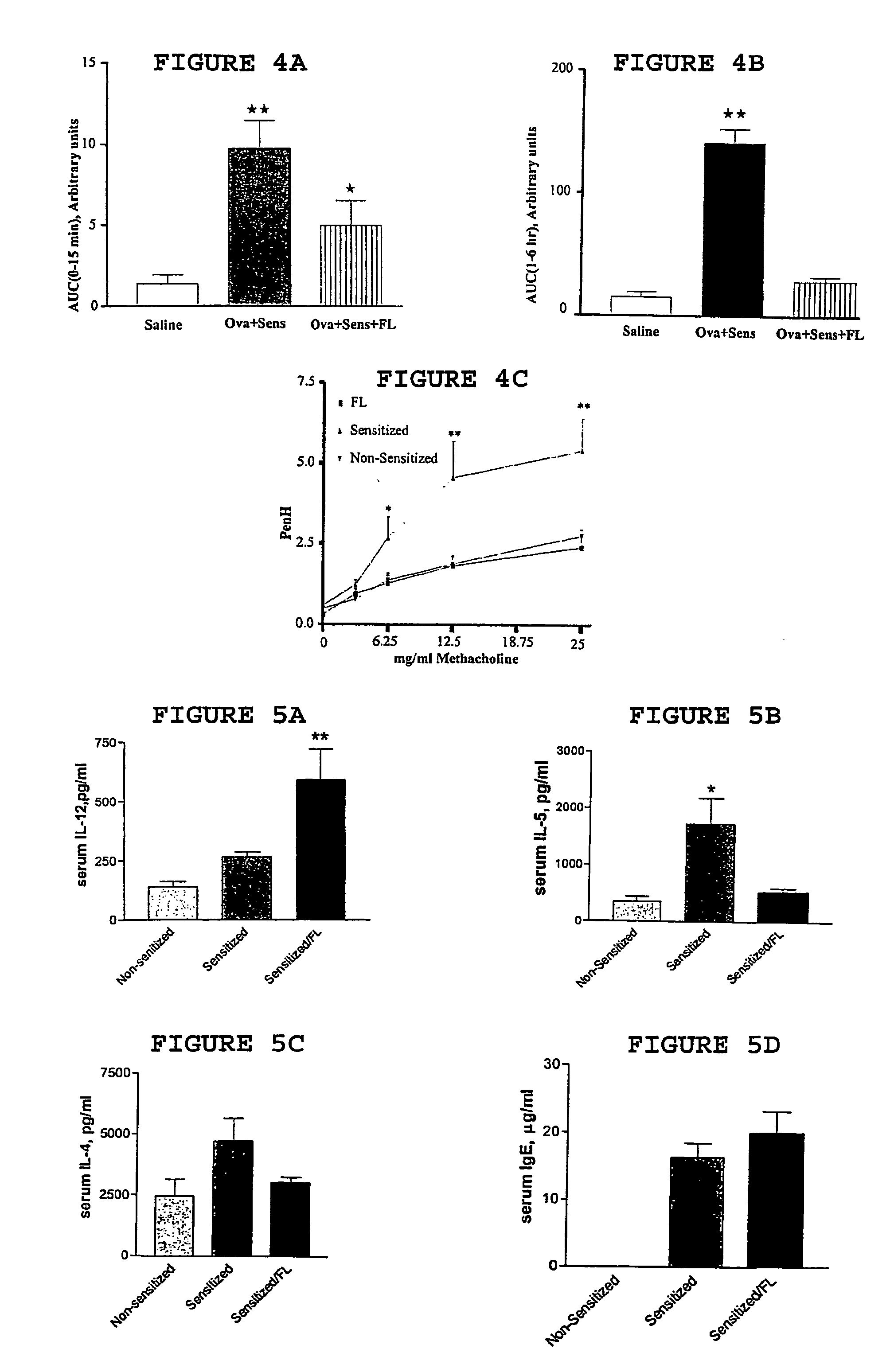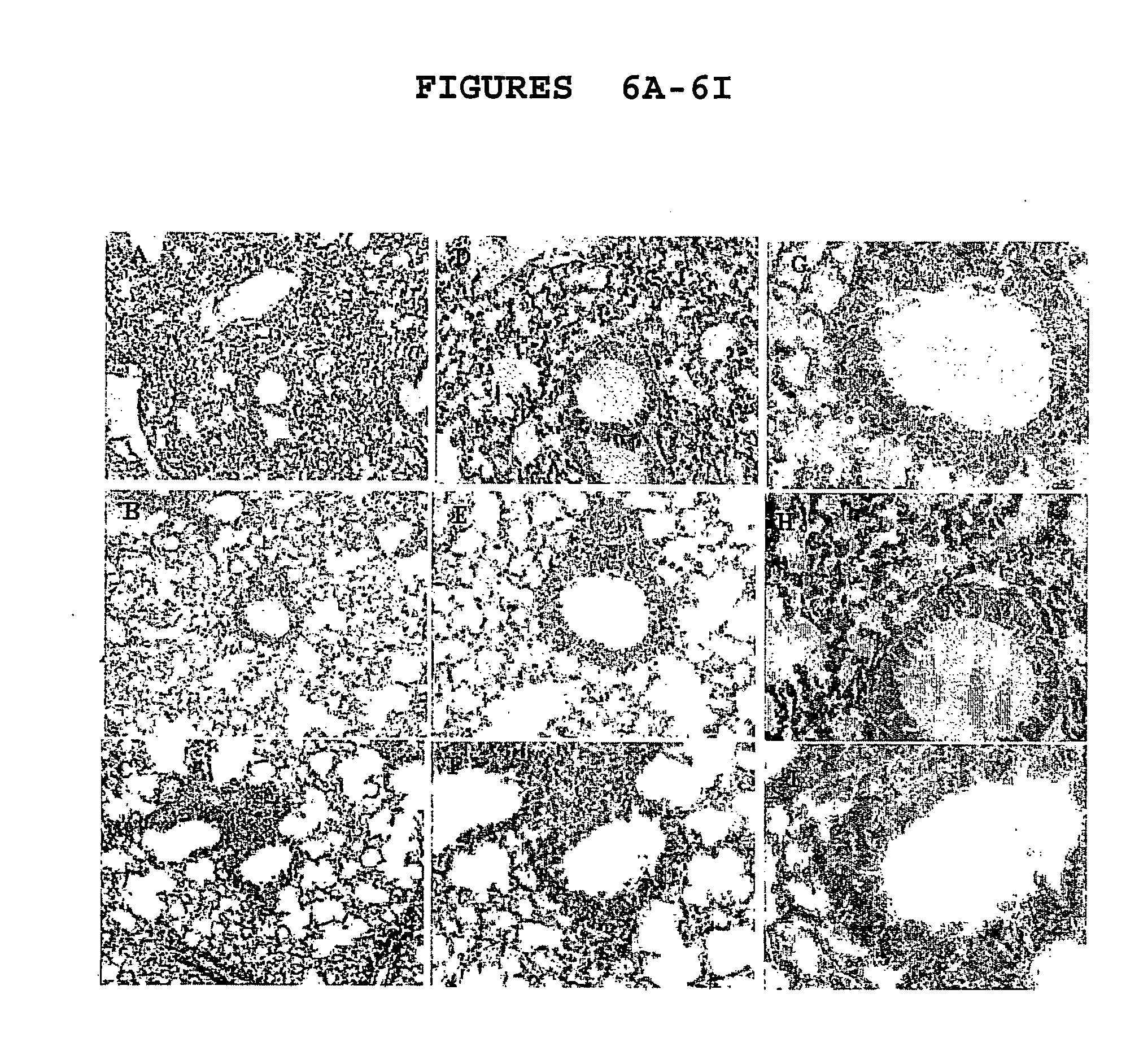Method for preventing or reversing asthma and compositions useful therefor
a technology of asthma and compositions, applied in the field of asthma prevention or reversal and compositions useful therefor, can solve the problems of irritation, inflammation and edema, horse racing industry affected by horses, asthma reactions are a growing problem for animals, etc., and achieves significant protection in the ear, decreased serum il-5 levels, and increased serum il-12 levels.
- Summary
- Abstract
- Description
- Claims
- Application Information
AI Technical Summary
Benefits of technology
Problems solved by technology
Method used
Image
Examples
example 1
Materials and Methods
Sensitization and treatment. Four- to five-week-old female Balb / c mice (Harlan Laboratories, Indianapolis, Ind.) were housed according to the NIH guidelines and were allowed constant access to food and water. Intraperitoneal (“i.p.”) injections of 6 mg of grade V chicken egg ovalbumin (“Ova”) (Sigma-Aldrich, St. Louis, Mo.) adsorbed to 2.25 mg (Imject Alum Pierce, Rockford, Ill.) and dissolved in PBS were delivered on days 0 and 8. Aerosol sensitization with 0.2% Ova for 10 min using an Ultra-Neb 90 nebulizer (DeVilbiss, Somerset, Pa.) was carried out on days 27, 28 and 29. Non-sensitized control mice received injection and aerosolization of PBS alone. Mice received i.p. injection of 6 μg of rhFlt-3 ligand (“FL”) in PBS (PeproTech, Rocky Hill, N.J.) on day -6 through day 6.
Pulmonary functions. On day 31, all mice were placed in whole-body plethysmograph chambers Buxco Electronics (Troy, N.Y.), and baseline Penh readings were taken. Penh is a dimensionless un...
example 2
Results
To determine whether FL could suppress asthma-like conditions in an Ova mouse model, we injected FL daily for 13 days, starting 6 days prior to sensitization. Previous studies by other investigators found significant increases in both peripheral and splenic white blood cells with FL treatment after 6-8 days, which roughly corresponds with the timing of sensitization day 0 in our study. Furthermore, these investigators observed a return to baseline values of these and other parameters 1 week after cessation of FL treatment, a time in our sensitization protocol that is about 1 week prior to aerosol Ova sensitization and challenge. Analysis of Ova-specific airway resistance of both EAR and LAR revealed that non-sensitized control mice had significantly lower airway resistance during either EAR or LAR (p≦0.05, EAR and p≦0.001, LAR; both compared to sensitized controls). FL-treated mice exhibited significant protection during LAR p≦0.001 but were without EAR protection. This is ...
example 3
Effect of FL on the Effects of Asthma in Established Asthmatic Mice
In order to examine the reversal effect of FL, we first sensitized and challenged mice with OVA. After the establishment of LAR and AHR to methacholine, mice were randomly divided in two groups: one group received pyrogen-free saline and the other received FL (300 μg / kg daily for 10 days). Two days after the final administration of FL, mice were challenged with OVA to examine EAR, LAR, and AHR to methacholine. The results are shown in FIG. 4A (EAR), FIG. 4B (LAR), and FIG. 4C (AHR). These data suggest that FL can attenuate LAR and abolish AHR to methacholine. Interestingly, in contrast to the preventive data shown in FIGS. 2A and 2B, the reversal experiments revealed a significant protection in the EAR following FL treatment. Treatment with FL alone in non-sensitized animals had no significant effect on pulmonary functions (data not shown).
PUM
| Property | Measurement | Unit |
|---|---|---|
| time | aaaaa | aaaaa |
| vascular permeability | aaaaa | aaaaa |
| thoracic pressure | aaaaa | aaaaa |
Abstract
Description
Claims
Application Information
 Login to View More
Login to View More - R&D
- Intellectual Property
- Life Sciences
- Materials
- Tech Scout
- Unparalleled Data Quality
- Higher Quality Content
- 60% Fewer Hallucinations
Browse by: Latest US Patents, China's latest patents, Technical Efficacy Thesaurus, Application Domain, Technology Topic, Popular Technical Reports.
© 2025 PatSnap. All rights reserved.Legal|Privacy policy|Modern Slavery Act Transparency Statement|Sitemap|About US| Contact US: help@patsnap.com



